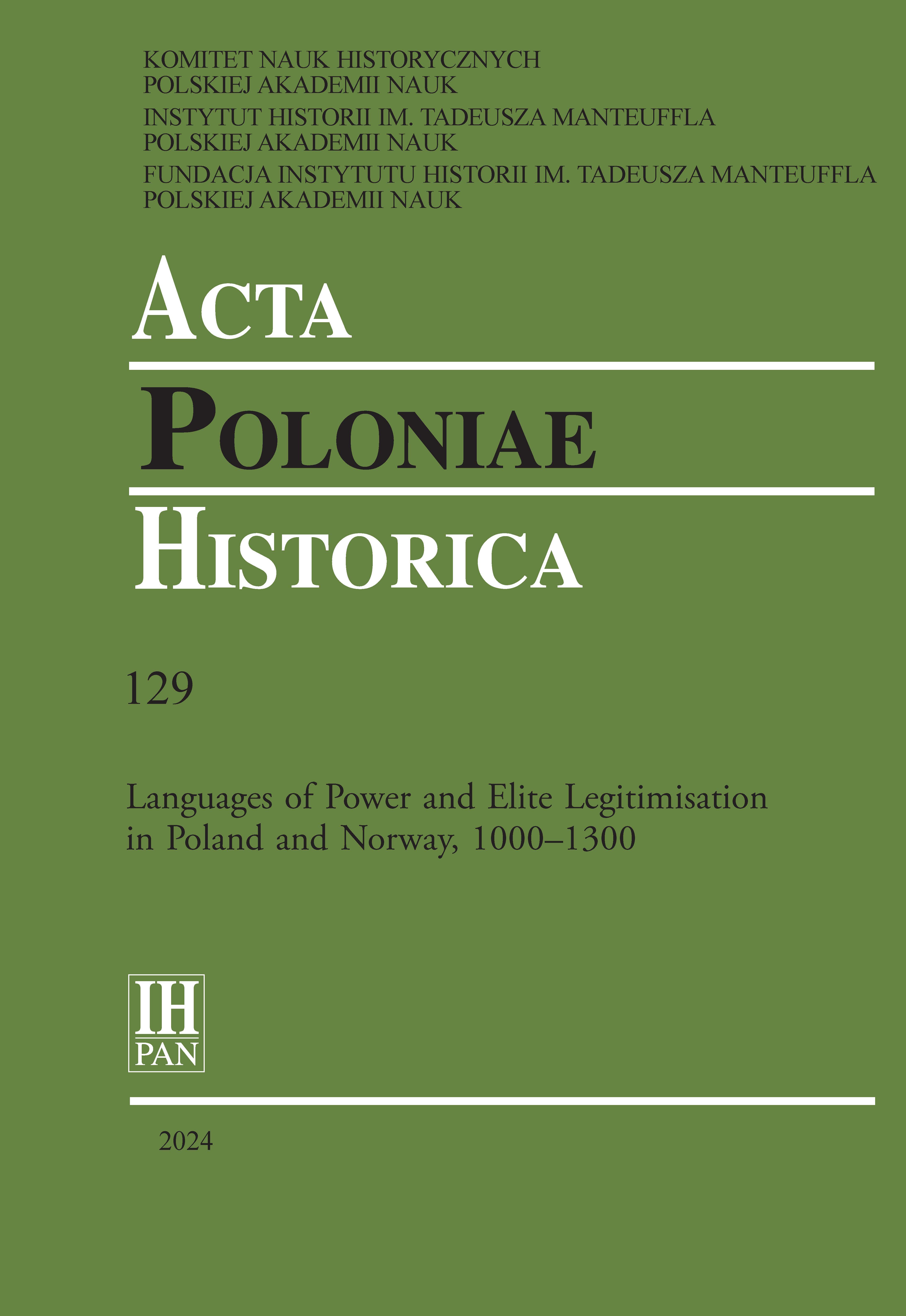Trimming the Tangle of Legend: Heroic Haircuts, Materialising Meals, and the Legitimisation of Dynastic Succession in Norwegian and Polish Foundation Narratives
DOI:
https://doi.org/10.12775/APH.2024.129.02Słowa kluczowe
origin legends, medieval historiography, dynastic legends, ritual haircut, feastAbstrakt
The medieval origin narratives of both Poland and Norway feature dynastic founders who came to power following a ritualistic haircut. In the Polish tradition, Siemowit of the Piast dynasty is anointed duke after his coming-of-age haircut, which is administered by two mysterious strangers; in the Norwegian version, Harald Fairhair vows to only cut his hair after he has united the realm. In both traditions, the transfer of power to these new rulers is also symbolised by a feast that vanishes from the table of a previous ruler and materialises before the dynastic founder. This chapter examines these narratives and compares their use of haircutting and feasting motifs to explore the transmission of royal authority both within and between ruling dynasties. Two traditions are explored from each arena: Gallus Anonymus’s Gesta principum Polonorum and Kadłubek’s Chronica Polonorum from Poland; and Fagrskinna and Snorri Sturluson’s Heimskringla from Norway. In comparing how the haircutting tradition in each polity evolved, we gain profound insights into their authors’ approach towards the development of dynastic power and the structure of dynastic history. In particular, we consider how these authors rationalised the concept of dynastic fragmentation and the rise of rival claimants as these elements came to dominate the political struggles of the twelfth and thirteenth centuries. Broadly speaking, we conclude that Polish historiography sought to cut away rival dynasts, whereas Norwegian traditions visualised competing dynastic branches as locks of hair cascading from one head.
Bibliografia
Allport Ben, ‘The Prehistory of Frá Fornjóti ok hans ættmönnum: Connections with the Chronicon Lethrense and their Consequences’, Neophilologus, 106 (2022), 513–32.
Banaszkiewicz Jacek, ‘Trzy razy uczta’, in Stefan K. Kuczyński (ed.), Społeczeństwo Polski średniowiecznej, v (Warszawa, 1992), 95–108.
Banaszkiewicz Jacek, Podanie o Piaście i Popielu. Studium porównawcze nad wczesnośredniowiecznymi tradycjami dynastycznymi (Warszawa, 20102).
Deptuła Czesław, Galla Anonima mit genezy Polski. Studium z historiozofii i hermeneutyki symboli dziejopisarstwa średniowiecznego (Lublin, 20002).
Dutton Paul, Charlemagne’s Mustache and Other Cultural Clusters of a Dark Age (New York, 2004), 11–17.
Jakobsson Sverrir, ‘The Early Kings of Norway, the Issue of Agnatic Succession, and the Settlement of Iceland’, Viator, xlvii, 3 (2016), 171–88.
Lincoln Bruce, Between History and Myth. Stories of Harald Fairhair and the Founding of the State (Chicago, 2014).
Michałowski Roman, ‘Restauratio Poloniae dans ideologie dynastique de Gallus Anonymous’, Acta Poloniae Historica, 52 (1985), 5–43.
Phelpstead Carl, ‘Hair Today, Gone Tomorrow: Hair Loss, the Tonsure, and Masculinity in Medieval Iceland’, Scandinavia Studies, lxxxv,1 (2013), 1–19.
Rutkowski Rafał, Norweska kronika Mnicha Teodoryka. Północna tradycja historyczna wprowadzona w nurt dziejów powszechnych (koniec XII wieku) (Toruń, 2019).
Shchavelev Alexey S., ‘Yeshche raz o mifoepicheskikh ustnykh istochnikakh srednevekovogo istoriopisaniya: rasskazy ob osnovatelyakh dinastiy u Galla Anonima i Snorri Sturlusona’, in Dmitri D. Belyayev and Timofey V. Gimon (eds), Drevneyshiye gosudarstva Vostochnoy Yevropy. 2013 god. Zarozhdeniye istoriopisaniya v obshchestvakh drevnosti i srednevekov’ya (Moscow, 2016), 565–92.
Sigurðsson Jón Viðar, ‘The Appearance and Personal Abilities of Goðar, Jarlar, and Konungar: Iceland, Orkney, and Norway’, in Beverley Ballin Smith, Simon Taylor, and Gareth Williams (eds), West Over Sea: Studies in Scandinavian Sea-Borne Expansion and Settlement Before 1300. A Festschrift in Honour of Dr Barbara E. Crawford (Leiden, 2007), 95–109.
Weiler Björn, ‘Tales of First Kings and the Culture of Kingship in the West, ca. 1050–ca. 1200’, Viator, xlvi, 2 (2015), 101–27.
Wiszewski Przemysław, Domus Bolezlai. Values and social identity in dynastic traditions of medieval Poland (Leiden–Boston, 2010).
Pobrania
Opublikowane
Jak cytować
Numer
Dział
Licencja
Title, logo and layout of journal are reserved trademarks of APH.Statystyki
Liczba wyświetleń i pobrań: 453
Liczba cytowań: 0



